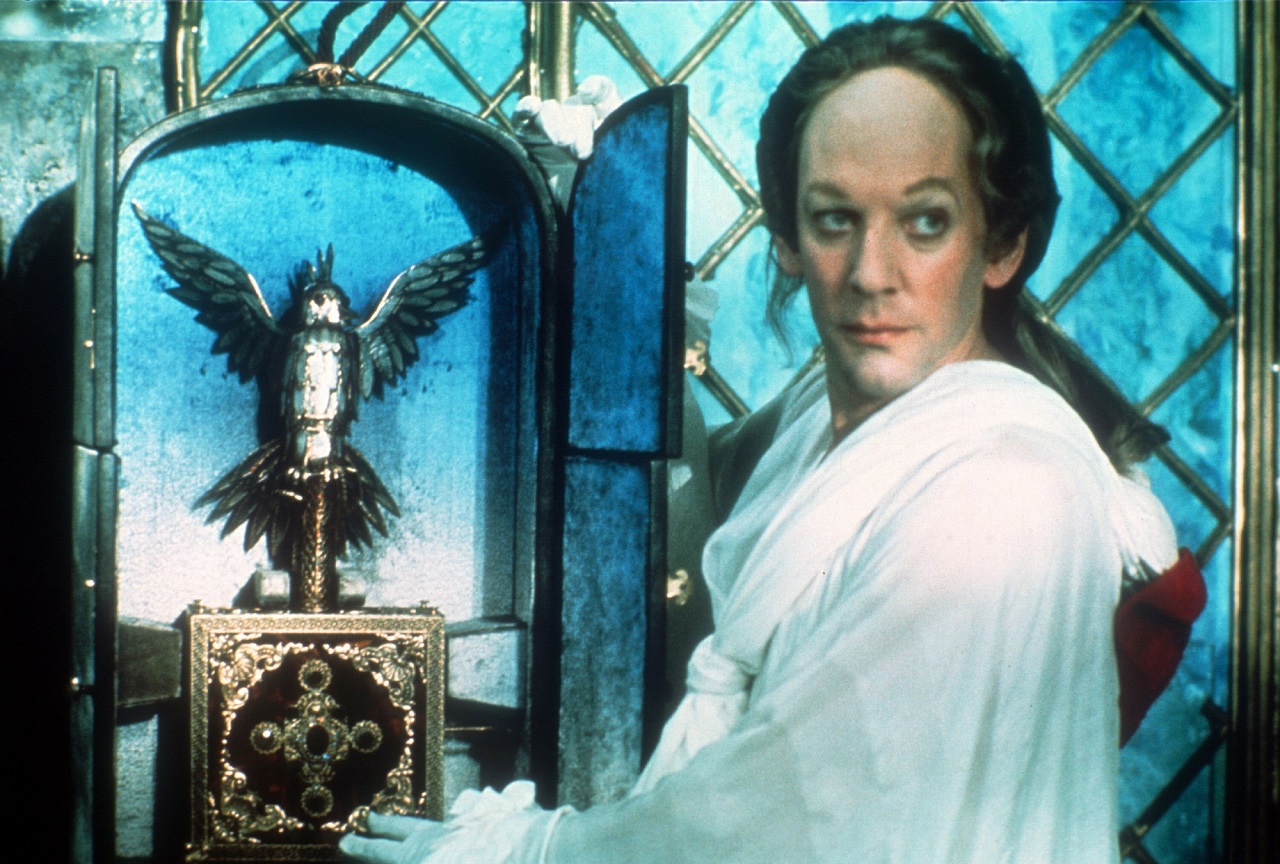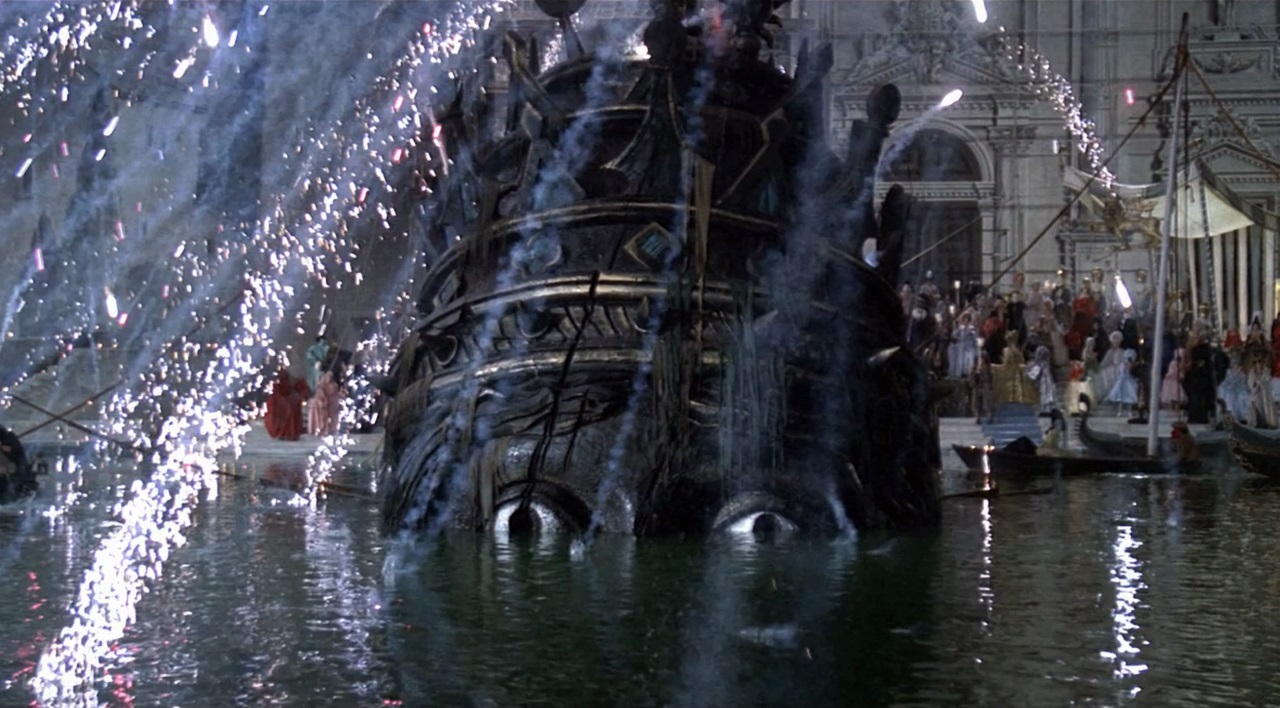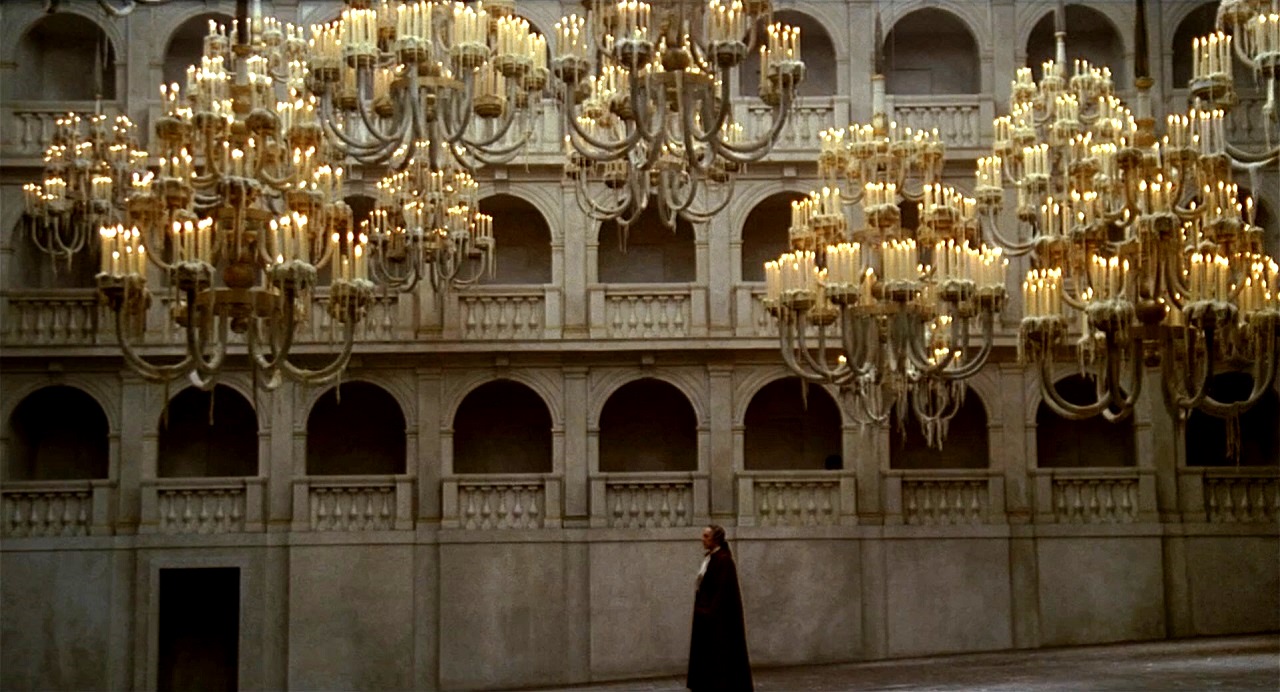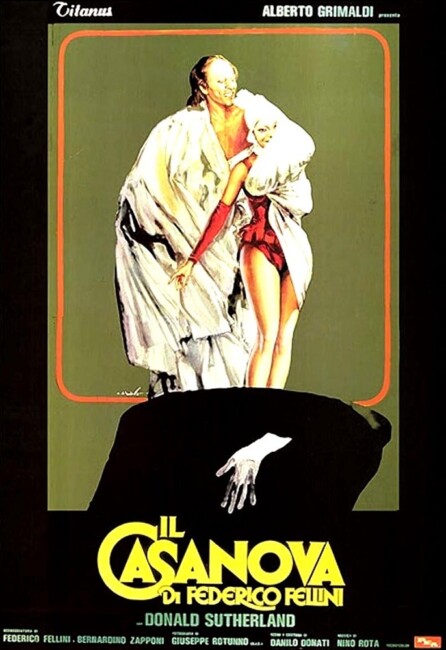(Il Casanova de Federico Fellini)
Crew
Director/Scenography Conceived by Federico Fellini, Screenplay – Federico Fellini & Bernardino Zapponi, Based on the Book The Story of My Life by Giacomo Casanova, Producer – Alberto Grimaldi, Photography – Giuseppe Rotunno, Music – Nino Rota, Special Effects – Adriano Pischiutta, Art Direction – Danilo Donati, Magic Lantern Designs – Roland Topor. Production Company – PEA.
Cast
Donald Sutherland (Giacomo Casanova), Tina Aumont (Henriette), Cicely Browne (Marquise d’Urfe), Carmen Scarpitta (Madame Charpillon), Clara Algranti (Marcolina), Margareth Clementi (Sister Henrietta), Olimpia Carlisi (Isabella), Adele Angela Lojodice (Automaton), Sandra Elaine Allen (Giantess), Daniel Emilfork Berenstein (Dubois), Dudley Sutton (Duke of Wurtemberg), Hans van der Hoke (Prince del Brando), John Karlsen (Lord Talto), Reggie Nalder (Falkirk)
Plot
18th Century Italy. Giacomo Casanova has a reputation as a great lover. He passes through many adventures in search of passion. He meets the aging Marquise d’Urfe who wants him to impregnate her so that she can reincarnate in her child’s body, is jailed as a black magician but escapes, and enters a love-making competition held by the Prince del Brando, along with many other adventures.
Italian director Federico Fellini (1920-93)emerged in the late 1950s, making gorgeous, often deliriously effervescent films of post-War Italy such as Nights of Cabiria (1957), La Dolce Vita (1960) and 8½ (1963). Following his international acclaim as a result of these, Fellini went onto make a trilogy of titularly self-presented films, beginning with Fellini Satyricon (1969), following through Fellini’s Roma (1972) and ending with Fellini’s Casanova. Fellini also made a number of ventures into fantastic material – see listing at the bottom of the page.
In each of these films, Fellini revels in extravagantly decadent excess. The films are hugely sprawling in length – Casanova runs at over three hours, for instance. They are films driven by the production designers and costumers – plot comes a distant second to the scenery on display. In Satyricon, Fellini made a decadent spectacle out of Ancient Rome and Roma was a series of meditations on present-day Italy, while Fellini’s Casanova charts the decadent spectacle of the Italy of the Age of Reason.
The sheer extravagance of Fellini’s Casanova is stunning. Fellini romps in the outlandish creations the design teams come up with – huge orgies in the street by costumed attendees, nuns wearing scarlet-hooped corsetry. When Casanova travels upon the sea, he floats upon rippling black polyurethane; at one point, he makes love to a woman wearing a crown of candles. There is a visit to the skeleton of a leviathan where surrealistic slideshows of dreamy womb horror images play, while outside women dance up and down on a horse-drawn swing and a man with a woman painted on his stomach juggles, while inside Casanova arm-wrestles a seven foot-tall giantess. The palace of Gutenberg is like something out of The 5000 Fingers of Dr T (1953) where organists are wheeled about on giant ladders in a wild cacophony. Eventually, Casanova falls in love with a lifelike automaton.



It is a wholly fantastic vision of the 18th Century that lives more in fantasy than in history, even though many of the incidents that Fellini represents are close to the historical truth (or at least the one that Casanova gave in his autobiography, which was published in 1794). As to the character of Casanova, Fellini and Donald Sutherland offer a less-than-romantic figure that seems more comically hapless than famous seducer, a figure who is always at the mercy and usually losing end of the various women he falls for. There is an annoying beeping and blipping electronic score played through every love scene.
Federico Fellini’s other ventures into fantastic cinema are:- The Temptation of Dr Antonio (1962) wherein a giant Anita Ekberg emerges from a poster and rampages through Rome; Juliet of the Spirits (1965) wherein a housewife’s life merges into and is overtaken by her fantasies; the eccentric Toby Damnit segment of the Edgar Allan Poe anthology Tales of Mystery and Imagination/Spirits of the Dead (1968); and the surreal City of Women (1981). Fellini Satyricon has been interpreted by one genre purveyor (Peter Nicholls) as a fantasy film, although does not meet the criteria for such in this author’s eyes.


